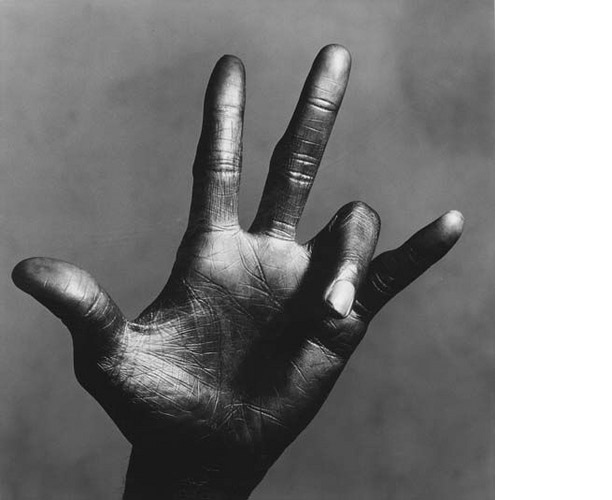
IRVING PENN, 1917-2009
The first time I saw an Irving Penn photograph I had no idea who’s picture I was looking at. It was an image of a man’s hand, and I knew right away the hand belonged to Miles Davis. How, I have no idea: I just knew. It made me very curious as to how it could be possible to register all that character, music and life in a photograph of a hand. This image ultimately was the beginning of my interest in photography. When I later found out that this image was photographed by Penn I got his book Passage. It’s an out-of-print copy I found at A Photographers Place in Soho, and to this day it remains one of my absolute favorite photography books. It’s beautifully printed (varnished on a matte stock), and packed with photographs equally as emotional as they are perfect: animal skulls, steel blocks, food still lifes, and the dying flowers he photographed for Vogue’s Christmas issue. He was a master of still lifes as well as portraits, and it seems like he was always able to break through the persona of the great artists of his time. Le Courbusier, Balanchine, Hitchcock and Cocteau were all photographed by him in late ’40s. Later, in the ’60s, he made portraits of legends like Bergman, Nureyev and Capote. He captured the spirit of their artistry in a single frame, while he was still able to show the normal person behind it.
Penn was a celebrated fashion photographer and a regular contributor at Vogue from his first cover in 1943 to recent years. His Balenciaga photographs from 1950 are legendary, and set the rules for studio fashion photography which are still present. But to me it was the still lifes and portraits by Penn that always stood out in magazine pages and on the museum walls. His legacy goes beyond influential. Although the master has passed away yesterday at age 92, the work left behind is immortal.
Photography by: Irving Penn, The hand of Miles Davis, New York, 1986

















